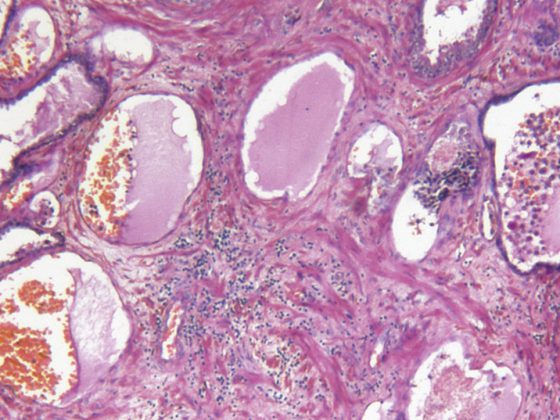A one-and-a-half-year-old child has had a low-grade fever for several days. However, although this can be reduced with medication, the general condition does not improve. The search for the underlying disease begins.
Background
At the pediatrician’s office, parents presented with their 1 year and 7 month old son. The child had already had a body temperature of over 38 degrees for several days, and since this morning of about 39 degrees. From experiences with their older children, the parents knew how to deal with infections and they were not known to the pediatrician to be particularly anxious. In this case, however, they felt that medical clarification was needed.
Anamnesis and diagnostics
Physical examination revealed no significant symptoms other than fever. The lungs were clear and there was no bronchitis, the ears were clear and therefore it was not otitis media. Only a mild cold was noted. The child was in good general condition and consumed food and fluids at a normal rate.
Treatment
For fever reduction, ibuprofen was prescribed as a strawberry-flavored juice (Nurofen® Junior, 2%), as it was known that the child took it well. Such symptomatic treatment is indicated from a body temperature of 38.5 degrees. The parents agreed to this treatment. They had already had good experiences with ibuprofen juice in their children.
Course
After 6 days, the parents presented again with their son, as there had been no significant improvement. The body temperature dropped occasionally, but kept rising above 38 degrees. The rhinitis was still present and also a slight coughing. Parents reported that although body temperature decreased to about 37.5 degrees in each case under ibuprofen juice, general condition did not improve. A urinalysis and CRP determination were then performed to rule out any urinary tract infections or other bacterial infections. However, the urine was fine and the inflammation values normal – despite the continued elevated body temperature. The next day the fever was even higher. It was possible to reduce it to the range of a normal body temperature by means of ibuprofen juice, but the general condition remained reduced and the child whimpered in pain. Two more physicians were then called in and an ultrasound was performed. This showed hepatosplenomegaly. Blood work also revealed anemia and ultimately a diagnosis of acute lymphoblastic leukemia was made.

Comment by Steven Rohbeck
Specialist for pediatrics and adolescent medicine, pediatric practice Knoblauch und Rohbeck (GbR), Potsdam
The present case shows that ibuprofen is well suited for fever reduction. It also has analgesic and anti-inflammatory components. These properties can be helpful for mild, but also more severe infections. What made me wonder in the present case were the additional malaise, the supposed abdominal and limb pains and the feeling of restlessness, which the child of course could not yet communicate at the age of one and a half. It can be difficult to detect serious cases, especially in young children who catch an infection every 2 weeks so far in the cold season, which is why it is all the more important to watch out for such abnormalities. Then it is important to get to the bottom of the causes of the fever in order to detect more serious diseases in time. In addition, it should be noted that the level of fever does not necessarily correlate with the severity of the disease.
This article was produced with the financial support of Reckitt Benckiser (Switzerland) AG, Wallisellen.
Brief technical information Nurofen®
RB-M-90460
Contribution online since 12.01.2022











